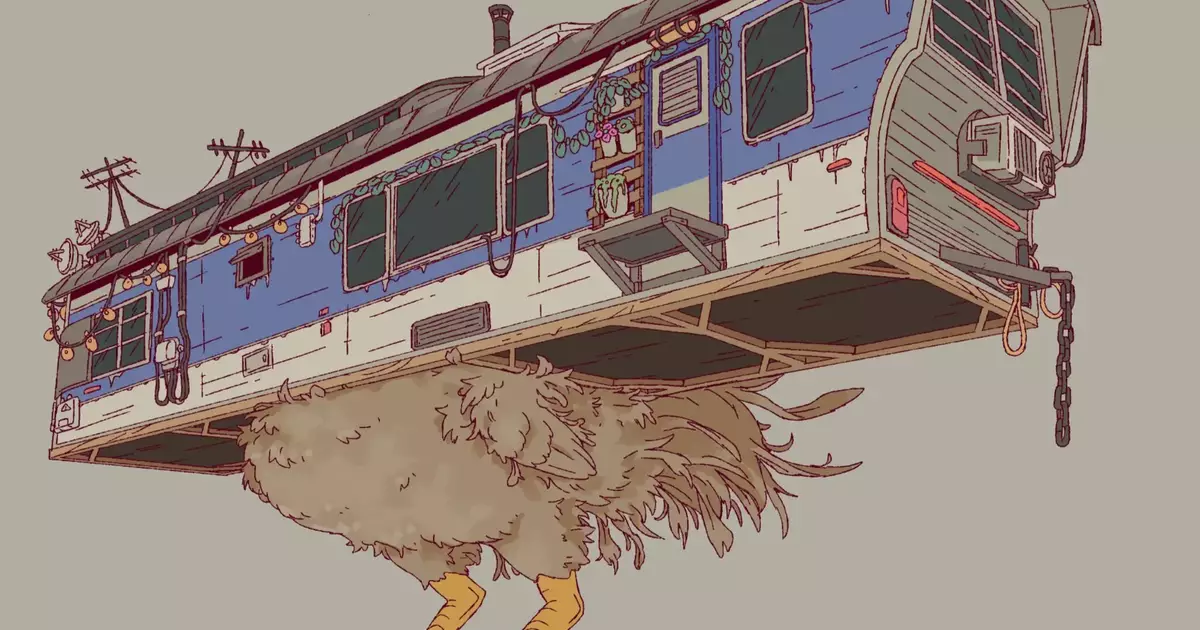What remains unexamined is often the most intriguing, and for game developers like Giant Sparrow, the crossroads of whimsy and the grotesque promises fertile ground for storytelling. Known for their poignant exploration of the human condition in games like *What Remains Of Edith Finch*, which delves into the fraught lives of a tragically fated family, Giant Sparrow is once again poised to delve deep into the mysterious undercurrents of life. The evolving landscape of their next project, tentatively titled “Heron,” teases an interaction with nature that challenges both the player’s understanding and emotional response.
In a realm often dominated by conventional narratives and gameplay mechanics, Giant Sparrow embraces a radical sense of experimentation. Moving forward from their prior work, their next endeavor aims to blend various genres and narrative styles, pushing the boundaries of what interactive storytelling can embody. Players can expect an anthology of interactive experiences that not only entertain but provoke deep thought. The forthcoming game winds through a tapestry of bizarre experiences, allowing players to act as a field biologist. This central role elevates the gameplay beyond mere observation, as participants will physically engage with a plethora of strange and organic creatures, ranging from ordinary fowl to whimsically distorted hybrids.
Developers are keenly aware of the limitations of typical nature documentaries, which are often criticized for their overly simplistic portrayal of ecological systems. As Giant Sparrow’s founder Ian Dallas points out, conventional nature shows can feel like fast-paced distractions rather than insightful explorations of life. “Heron” promises to change this narrative by emphasizing diverse and unpredictable interactions with the game’s biology, thus creating a more textured world where gameplay mechanics invite players to draw their own conclusions about the interconnectedness of life.
Emotional Resonance and Creative Disruption
What sets Giant Sparrow apart is their ability to infuse emotional depth into every experience, provoking a visceral reaction from players. Dallas articulates the goal of transforming the mundane into the extraordinary, encouraging players not to shy away from the oddities of nature. “We want to showcase how weird biology can be,” he asserts, hinting at horrifying and enlightening encounters with creatures whose peculiarities may challenge preconceived notions of animal behavior. For instance, the reproductive habits of butterflies, often overlooked, lend themselves to unsettling and fascinating experiences that evoke both horror and intrigue. This duality is what Giant Sparrow seeks to master—a delicate balance that not only engages the player but fosters reflection on the strangeness inherent in the world around us.
Dallas’s vision suggests that while players will engage with biological elements, there is also an active invitation to embrace unpredictability. He posits that traditional game mechanics often lead to a rigid formulaic approach akin to a chessboard. By disrupting these established patterns, Giant Sparrow aspires to cultivate an environment where exploration feels vital and enabling. “Single-player experiences don’t have to be predictable,” he explains, hinting at immersive scenarios where players might need to coax a giraffe into a specific behavior, breaking the mold of the typical game structure.
In its essence, “Heron” becomes a conduit for fusing fantastical interpretations of life with grounded ecological truths. The concept art reveals an imaginative range of creatures, juxtaposing the familiar with absurd twists that capture the unpredictable spirit of nature. One can envision clucking chicken houses that blur the boundaries of architecture and wildlife, embodying the narrative’s whimsical tone while subtly reflecting a critique of human tendencies to impose order on chaos.
Furthermore, such creative decisions raise questions about the role of design in shaping perceptions of nonhuman creatures. Will these beings remain passive figures within the narrative, subject solely to the player’s whim, or will there be a deeper interrogation of biological processes that invites players to question their own engagement with nature? These questions are emblematic of the nuance that games can advocate—an invitation not simply to play, but to reflect and debate our relationship with the natural world.
The New Weird in Video Game Storytelling
As “Heron” takes shape, the echoes of New Weird literature reverberate through its conceptual framework, conjuring comparisons with the likes of Jeff VanderMeer. The sense of exploration mingled with a shade of horror creates an inviting yet unsettling atmosphere that promises to captivate and provoke. It invites a consideration of the bizarre intersecting with the familiar, challenging players to confront the unexpected layers of organic life.
Ultimately, Giant Sparrow’s ambition presents the potential for an immersive experience that goes beyond entertainment. With “Heron,” players may not only discover more about the peculiarities of nature but also confront their preconceived notions of life itself. As we prepare for this enigmatic journey into the wild, it stands as a testament to the power of video games to engage, provoke, and inspire empathy towards a world that is far stranger than we often realize.

